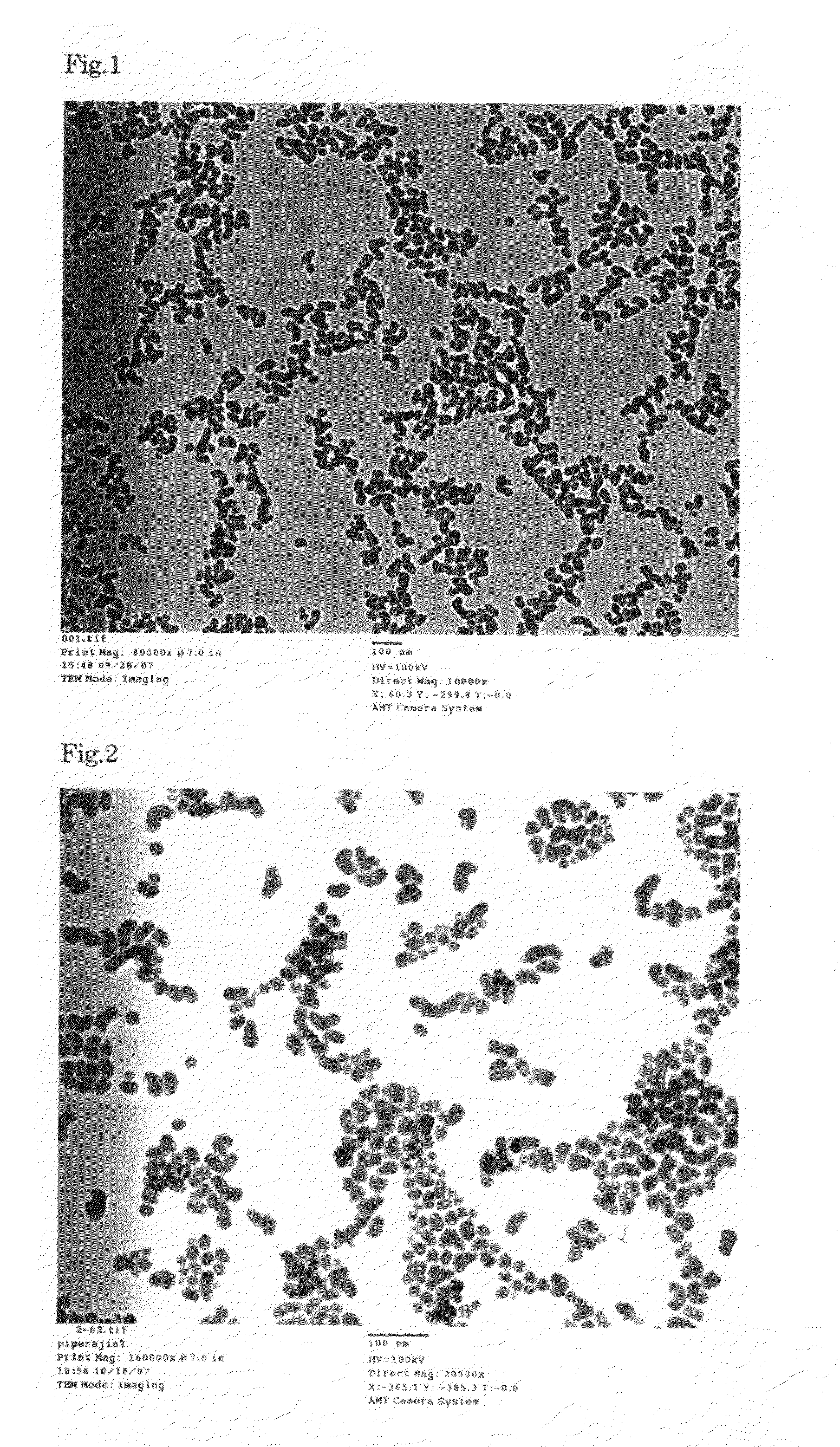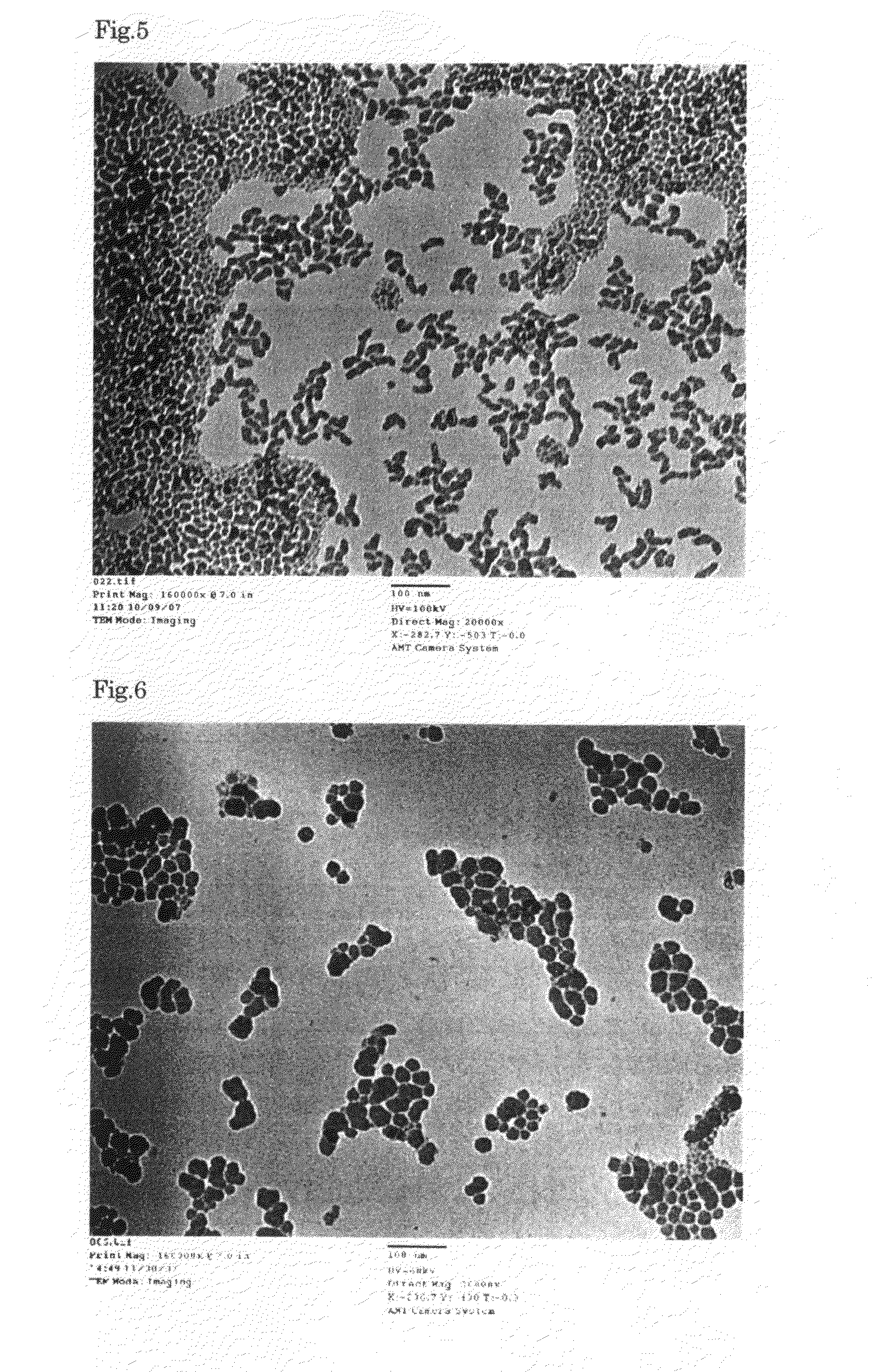Polishing composition for semiconductor wafer
a technology of polishing composition and semiconductor wafer, which is applied in the direction of lapping machines, manufacturing tools, other chemical processes, etc., can solve the problems of affecting the yield and quality of products, affecting the quality of products, and causing minute crushes, etc., to prevent over-etching, maintain adequate polishing ability, and great polishing ability
- Summary
- Abstract
- Description
- Claims
- Application Information
AI Technical Summary
Benefits of technology
Problems solved by technology
Method used
Image
Examples
examples
[0071]The present invention will be illustrated in more detail in Examples, although, these examples will not limit the previous invention. In Examples, following equipments are used for analysis of colloidal silica.
[0072](1) TEM observation: Transmission Electron Microscope H-7500 of Hitachi Ltd., is used.
[0073](2) Specific surface area by BET method: Flow Sorb 2300 of Shimadzu Corporation is used.
[0074](3) Analysis of nitrogen containing basic compounds except hydrazine: Total organic carbon meter TOC-5000A, SSM-5000A of Shimadzu Corporation is used. Carbon amount is converted into nitrogen containing basic compounds. Specifically, total organic carbon amount (TOC) is calculated by numerical formula of TOC=TC−IC after total carbon amount (TC) and inorganic carbon amount (IC) are measured. As a standard for TC measurement, a glucose aqueous solution of 1 weight % carbon amount is used, and as a standard for IC measurement, sodium carbonate of 1 weight % carbon amount is used. Ultra...
preparation example 1
[0078]5.2 kg of JIS 3 sodium silicate (SiO2: 28.8 weight %, Na2O: 9.7 weight %, H2O: 61.5 weight %) is added to 28 kg of deionized water, then mixed homogeneously and diluted sodium silicate having silica concentration of 4.5 weight % is prepared. This diluted sodium silicate is passed through a column containing 20 L of H type strong acidic cation exchange resin (AMBERLITE IR120B, product of ORGANO CORPORATION), which is previously regenerated by hydrochloric acid, and 40 kg of an active silicic acid aqueous solution having SiO2 concentration of 3.7 weight % and a pH of 2.9 is obtained. On the other hand, ethylenediamine anhydride (reagent) is added to deionized water and 10 weight % ethylenediamine aqueous solution is prepared.
[0079]Then, colloidal particles are grown up by a build up method. That is, 16 g of 10 weight % ethylenediamine aqueous solution is added to 500 g of said obtained active silicic acid aqueous solution while it is stirring and the pH is adjusted to 8.5. The s...
preparation example 2
[0081]By same method as Preparation Example 1, 40 kg of an active silicic acid aqueous solution having SiO2 concentration of 3.7 weight % and a pH of 2.9 is obtained. On the other hand, 34 g of crystal of diethylenediamine (piperazine, reagent) hexahydrate is dissolved in deionized water and total volume is brought to 190 g, to prepare 8 weight % aqueous solution.
[0082]30 g of 8 weight % diethylenediamine aqueous solution is added to 500 g of said obtained active silicic acid aqueous solution while it is stirring and the pH is adjusted to 8.5. The solution is heated to 100° C. and preserved 1 hour, then 9500 g of active silicic acid aqueous solution is added by 9 hours. During adding process, 8 weight % diethylenediamine aqueous solution is added so as to maintain the pH of 9 to 10 while heating (99° C.) is continued. Heating (99° C.) is continued 1 hour after adding process is over, then the solution is matured, and cooled down. In this process, 152 g of 8 weight % diethylenediamin...
PUM
| Property | Measurement | Unit |
|---|---|---|
| particle diameter | aaaaa | aaaaa |
| width | aaaaa | aaaaa |
| width | aaaaa | aaaaa |
Abstract
Description
Claims
Application Information
 Login to View More
Login to View More - R&D
- Intellectual Property
- Life Sciences
- Materials
- Tech Scout
- Unparalleled Data Quality
- Higher Quality Content
- 60% Fewer Hallucinations
Browse by: Latest US Patents, China's latest patents, Technical Efficacy Thesaurus, Application Domain, Technology Topic, Popular Technical Reports.
© 2025 PatSnap. All rights reserved.Legal|Privacy policy|Modern Slavery Act Transparency Statement|Sitemap|About US| Contact US: help@patsnap.com



